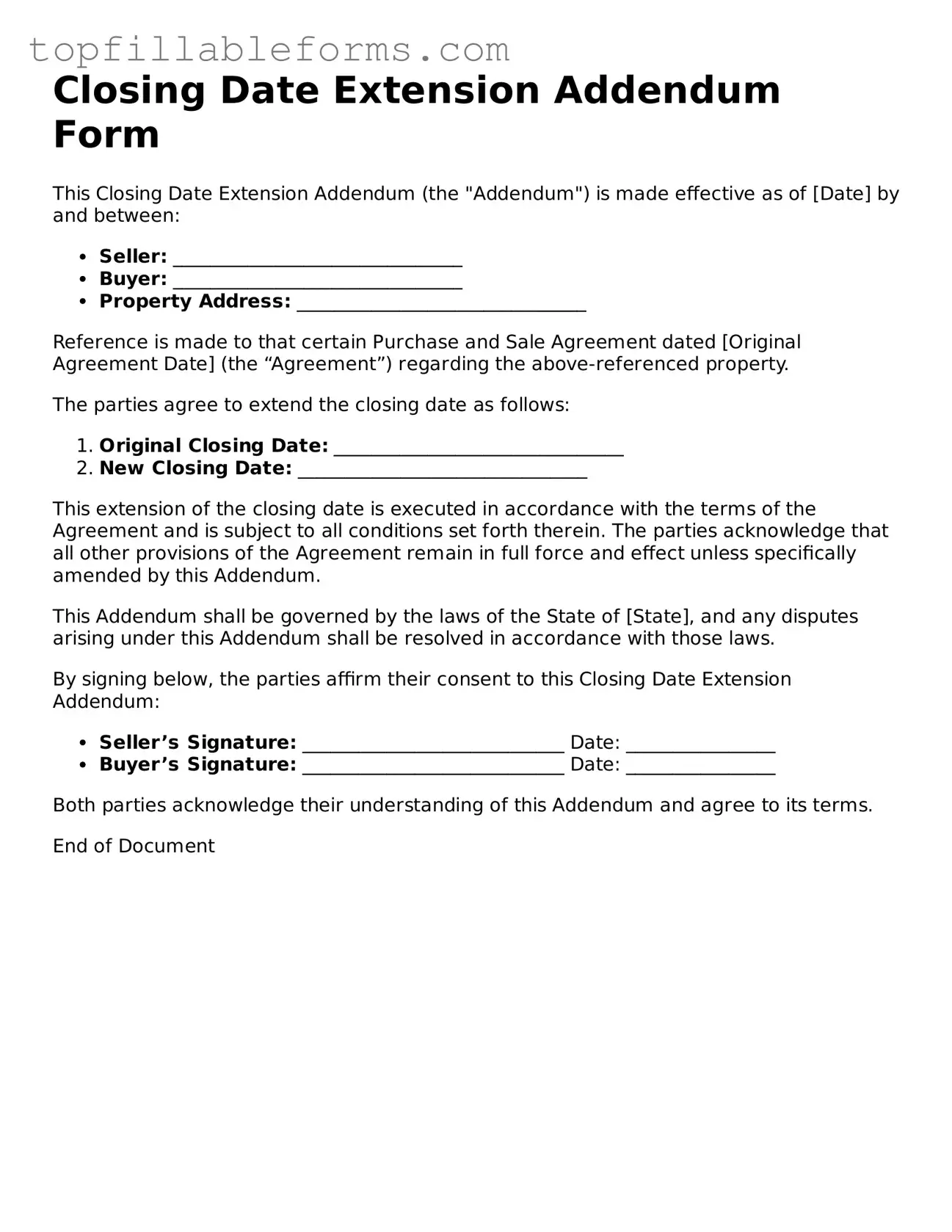Closing Date Extension Addendum Form
This Closing Date Extension Addendum (the "Addendum") is made effective as of [Date] by and between:
- Seller: _______________________________
- Buyer: _______________________________
- Property Address: _______________________________
Reference is made to that certain Purchase and Sale Agreement dated [Original Agreement Date] (the “Agreement”) regarding the above-referenced property.
The parties agree to extend the closing date as follows:
- Original Closing Date: _______________________________
- New Closing Date: _______________________________
This extension of the closing date is executed in accordance with the terms of the Agreement and is subject to all conditions set forth therein. The parties acknowledge that all other provisions of the Agreement remain in full force and effect unless specifically amended by this Addendum.
This Addendum shall be governed by the laws of the State of [State], and any disputes arising under this Addendum shall be resolved in accordance with those laws.
By signing below, the parties affirm their consent to this Closing Date Extension Addendum:
- Seller’s Signature: ____________________________ Date: ________________
- Buyer’s Signature: ____________________________ Date: ________________
Both parties acknowledge their understanding of this Addendum and agree to its terms.
End of Document
